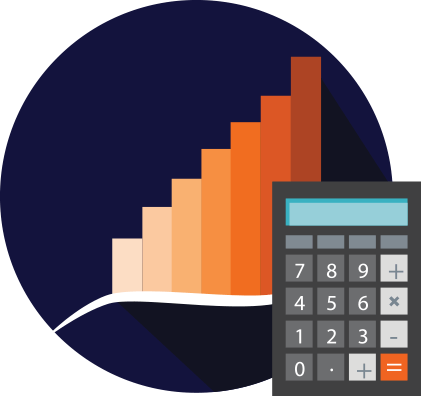Tax season brings with it a lot of stress. While most Americans actually get a refund, there are quite a few that find out they owe money.
This is likely to become increasingly true with the growing popularity of side hustles and the gig economy.
So, what happens if you see the bill and realize that you can’t pay taxes?
The good news is that it’s not the end of the world — as long as you take the proper steps to rectify the situation.
File Your Tax Return
Fun fact: the penalty the IRS charges when you can’t pay taxes is less than the penalty that comes with not filing your return.
So, if you don’t want the IRS to think you’re up to something shady, you need to file that tax return. If you don’t think you can complete the paperwork in time, at least file an extension. Your tax bill is still due on tax day, but at least you have some breathing room to get the paperwork together.
No matter your situation, make sure you account for your tax return. You can handle the logistics of paying what you owe once that’s done.
Set Up a Payment Plan with the IRS
Believe it or not, the IRS understands when you can’t pay taxes. They have an installment plan designed to help you pay your bill if it’s too big for you.
I’ve actually used this option in the past. The first tax bill after I divorced was brutal, just because of how my ex and I had a business together and our new filing statuses. My own tax bill was more than $12,000. I was just divorced — and I’d recently broke my wrist. I didn’t have that money available.
So I got online and applied for an installment plan. It’s easy to do, and if you owe less than $25,000, you can do it fairly quickly online. Someone from the IRS might call you to verify information and find out why you need an installment plan.
The IRS does charge a setup fee, and you will pay interest, but it’s usually less than what you’d pay if you don’t file your return. And it’s probably even less than what you’d pay in interest with a loan from elsewhere.
Alternatives to the IRS Installment Plan
With the IRS installment plan, you set up an automatic withdrawal from your bank account. The amount is based on what you feel you can pay, and whether you can pay off your tax debt within a certain amount of time.
Some taxpayers feel like they can get a better deal elsewhere, however. And this might be true. Right now, the IRS charges about 3% APR on installment plans. So if you can get a personal loan at a lower interest rate, you might save some money.
Others try to apply for a 0% APR credit card. The IRS accepts credit card payments, so that’s a possibility if you can’t pay taxes from your bank account.
If you qualify for a 0% APR credit card deal, and you can pay off the amount within the introductory period (usually anywhere between 12 and 24 months), it can save you quite a lot — and maybe even earn you credit card rewards.
You need to be careful with this strategy, however. If you can’t pay off your tax amount before the introductory period ends, you could be stuck with much higher credit card interest rates.
And, of course, you could borrow from friends or family to cover what you owe. In the end, though, unless you can find a deal that costs less than the IRS installment plan, you’re better off just signing up with the IRS.
Create a Plan to Pay Your Taxes — So It Doesn’t Happen Again
Finally, if you can’t pay taxes this year, it’s a wake-up call that you need to do something a little different with your tax planning. In my case, a divorce and an injury drained my finances. Those issues haven’t been a problem moving forward, and I’ve been able to stick with my quarterly payments.
If you have your own business, it’s important to estimate your quarterly payment amount and set aside money. I like to take 25% of my business income each month and put it in a high-yield savings account. Then, when it’s time to make a quarterly payment, the money is right there, ready to be used.
Another trick, if you or your spouse (and you file jointly), works a “real” job is to adjust your withholding. When I was married, we withheld an extra $300 a month from my then-husband’s paycheck for taxes. We still almost always owed money at the end of the year, but it was a much more manageable amount because we’d been withholding more from the paycheck.
With a little planning, now that you’ve learned a bit about paying taxes, you should be able to avoid situations that involve being able to pay taxes going forward.

